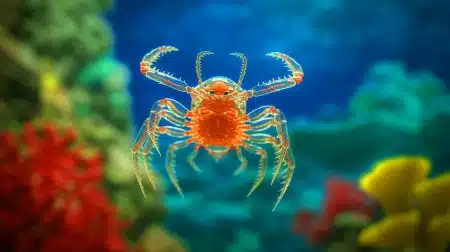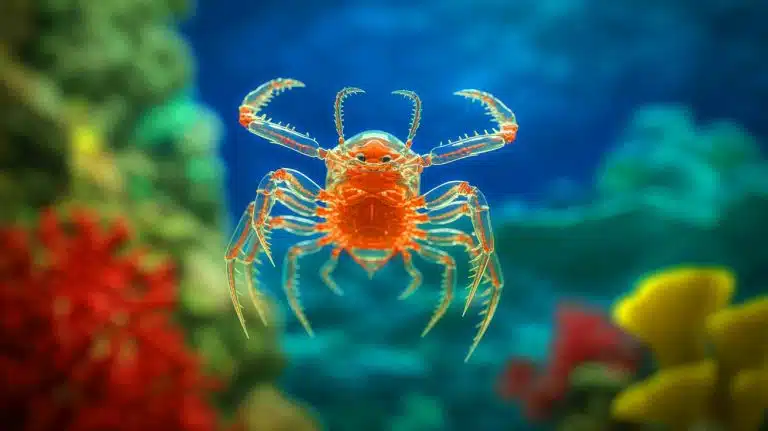| IN A NUTSHELL |
|
The ocean’s depths hold many mysteries, with new discoveries continuously shedding light on the complex web of life beneath the waves. Recently, marine biologists have made significant advancements in understanding a particularly enigmatic group of tiny crustaceans known as Facetotecta. Despite being observed since the late 19th century, the adult form of these creatures has eluded scientists for over a century. Thanks to a breakthrough study conducted by researchers at the Natural History Museum of Denmark, the Facetotecta have been genetically linked to barnacles, providing a clearer picture of their evolutionary background and life cycle. This discovery opens up new avenues for research into their mysterious adult form and life as a parasite.
The Missing Link in Crustacean Evolution
Scientists have long been puzzled by the Facetotecta’s place in the crustacean family tree. Recent research has finally pieced together part of this puzzle. By collecting over 3,000 larval specimens from ocean waters, researchers analyzed their RNA to establish genetic relationships with other crustaceans. This genomic analysis confirmed that these creatures are indeed part of the barnacle family, although they diverge significantly from other parasitic lineages.
Barnacles are typically known for their sedentary, filter-feeding lifestyle, attaching themselves to surfaces like ship hulls and whale skin. However, the Facetotecta exhibit a unique mobility, a trait not commonly associated with barnacles. Researchers found that despite their mobility, these creatures have developed a parasitic lifestyle similar to other barnacles in a fascinating example of convergent evolution. This phenomenon occurs when unrelated species develop similar characteristics to adapt to comparable environments or lifestyles.
The Facetotecta’s distinct morphological and physiological traits, such as hooks, hormone sensitivity for molting, and a worm-like form, support the theory of their parasitic nature. These adaptations suggest a complex evolutionary path, highlighting the intricate ways life in the ocean evolves independently to meet similar challenges.
An Invasive Survival Strategy
Parasitism as a survival strategy is not uncommon among marine organisms, and some barnacles have taken this to an extreme. Certain parasitic barnacles inject their tissues into host organisms, developing inside them and sometimes even altering their reproductive capabilities. These barnacles can manipulate their host's behavior, making them rear the barnacle's offspring instead of their own.
James Bernot, co-author of the study, describes how some parasitic barnacles can "castrate" crabs, preventing them from reproducing. They may even feminize male crabs, tricking them into nurturing the barnacle's brood as though it were their own. This profound behavioral manipulation mirrors that of the Gibellula attenboroughii fungus, which alters the actions of its spider hosts.
Although the specific hosts for adult Facetotecta remain unidentified, researchers are confident they employ a similar parasitic strategy. These larvae drift freely in the ocean, eventually embedding themselves within a marine host to complete their life cycle. The quest now is to uncover this elusive adult form and identify its host, which will provide a comprehensive understanding of this peculiar crustacean.
Genetic Breakthroughs and New Frontiers
The breakthrough in linking the Facetotecta to barnacles represents a significant leap in marine biology. The use of genetic analysis has provided insights that were previously unattainable through observational methods alone. By establishing the genetic lineage of these crustaceans, researchers have not only identified their place within the crustacean family but have also laid the groundwork for future investigations into their life cycle and ecological role.
This discovery underscores the importance of genetic research in understanding marine biodiversity. It highlights the untapped potential hidden within the ocean's depths, with countless species waiting to be discovered and understood. As scientists continue to explore these waters, they hope to piece together the full life history of the Facetotecta, including the elusive adult stage.
Such findings could have broader implications for understanding parasitic mechanisms and evolutionary processes in marine environments. They provide valuable data that could inform conservation strategies and the management of marine ecosystems as human activities increasingly impact oceanic life.
The Quest for the Unknown
The study of Facetotecta is a reminder of how much remains unknown about our planet's oceans. While significant progress has been made in identifying their genetic ties, the mystery of their adult form persists. Researchers continue to seek out the adult stage of these crustaceans, driven by the potential insights it could offer into parasitic life cycles and marine biodiversity.
As scientists forge ahead in their quest, they rely on advanced technologies and international collaboration to explore the myriad secrets of the sea. The pursuit of knowledge about the Facetotecta is emblematic of the broader scientific endeavor to understand the natural world, where each discovery leads to new questions and possibilities.
What new mysteries will unfold as we deepen our exploration of the ocean's depths, and how will these discoveries reshape our understanding of life on Earth?
Did you like it? 4.6/5 (25)








This is fascinating! Could these parasites potentially affect human brains too? 🧠👽
Are these alien parasites a threat to humans, or are they only affecting marine life? 🤔
Wait, are these creatures like real-life mind-controlling aliens? 😱
Great article! It’s amazing how much we still have to learn about our oceans. Thanks for sharing!
Thank you for the insightful article. It’s amazing how much we still don’t know about our oceans!
So, they’re like barnacles but scarier? Nature never ceases to amaze me.